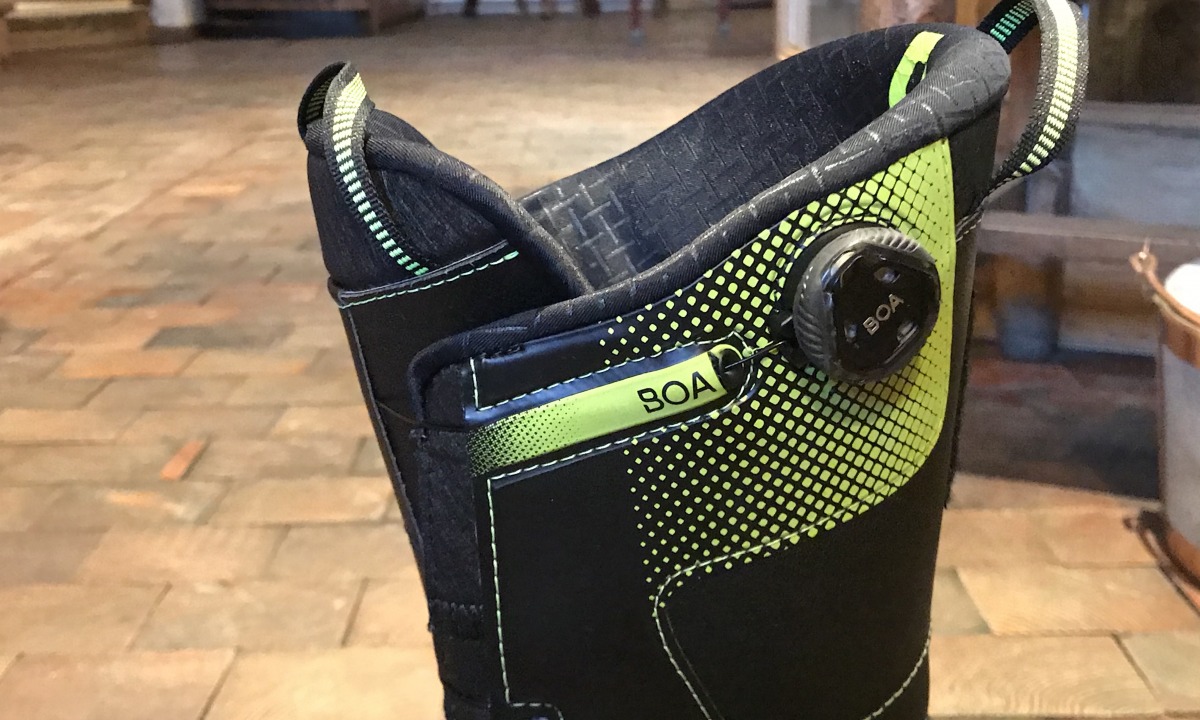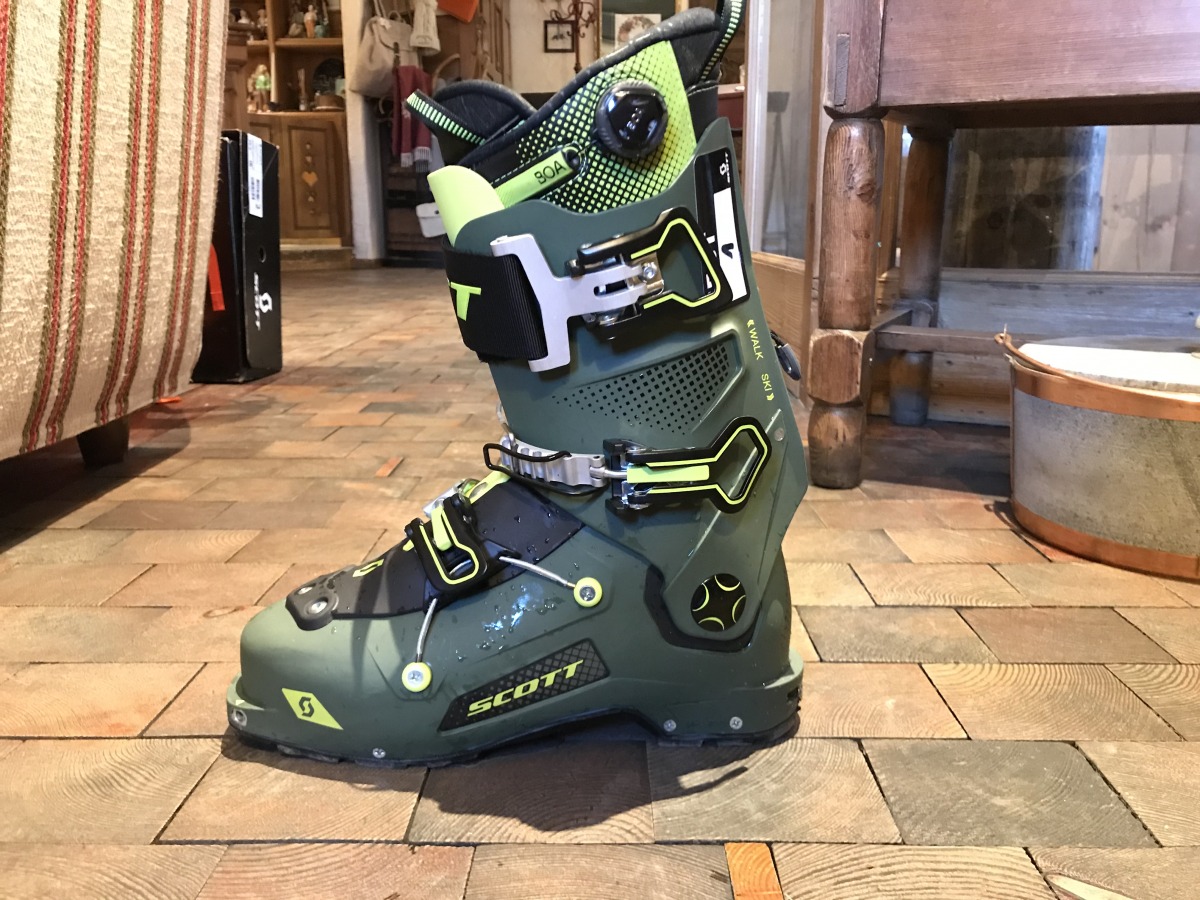
The SCOTT Freeguide Carbon touring boot: the product of 1.5 years of development, 12 prototypes and more than 150,000 meters of ascent and descent.
Freeguide touring boot with big mountain ambitions
In foyer of the charming Auberge De La Maison — a rustic lodge nestled in a maze of cobblestone streets at the base of Mount Blanc in Courmayeur, Italy, an unveiling was underfoot. A black box sat on the cobbled wood floor of the dimly lit room, beside a roaring fire in a stone hearth. In the box was the first major boot innovation from SCOTT over the past decade. The Alps, a long-standing proving ground for steep skiing mountaineers and the home of SCOTT, were the ideal setting for an introduction to the latest addition in the ever growing segment of freeride skiing: the SCOTT Freeguide carbon touring boot, new for 20/21 .
Let there be no doubt, free ride skiing is having a moment. With the widespread embrace of Shift and Tecton bindings (with more innovations in beefier touring/freeride options underway), an emerging class of slightly heavier, stiff all mountain skis and a cultural pivot toward the pursuit of human powered big mountain skiing, ambitious ascents and descents are the focal point of many hard charging skiers.
SCOTT has long been a fixture in the touring boot world and the Freeguide builds on that reputation with a light (ish) three-buckle charger, its stiffest, most performance oriented touring boot yet. I was able to get my hands on the boot during a recent SCOTT event in Courmayeur. Unfortunately they did not have preproduction sizes small enough for me to ski it, so I instead got to pull it apart and ask questions to the folks behind it. Here’s the scoop.
The Freeguide is a carbon enforced, three-buckle cabrio hybrid boot with ‘true’ 130 flex and compatibility with pretty much every binding save for non MNC (Multi Norm Compatible) alpine. It sits nicely amongst its stiff, freeride-oriented brethren like the Maestrale RS, Tecnica Zero G, Solomon S Lab and Hoji Free at a weight of 1430 grams (26.5). The shell combines the classic two-piece overlap with the three-piece cabrio constructions, resulting in a three-piece construction designed to enable precision and power throughout the flex of the boot. The two-part tongue locks into place in ski mode to create an all around stiff and stable feeling, but also gets out of the way for touring. The shell is primarily Grilamid with carbon enforcements for increased stiffness and weight savings. Lightweight buckles round out the package that you can preset and flick closed when you’re ready to ski.
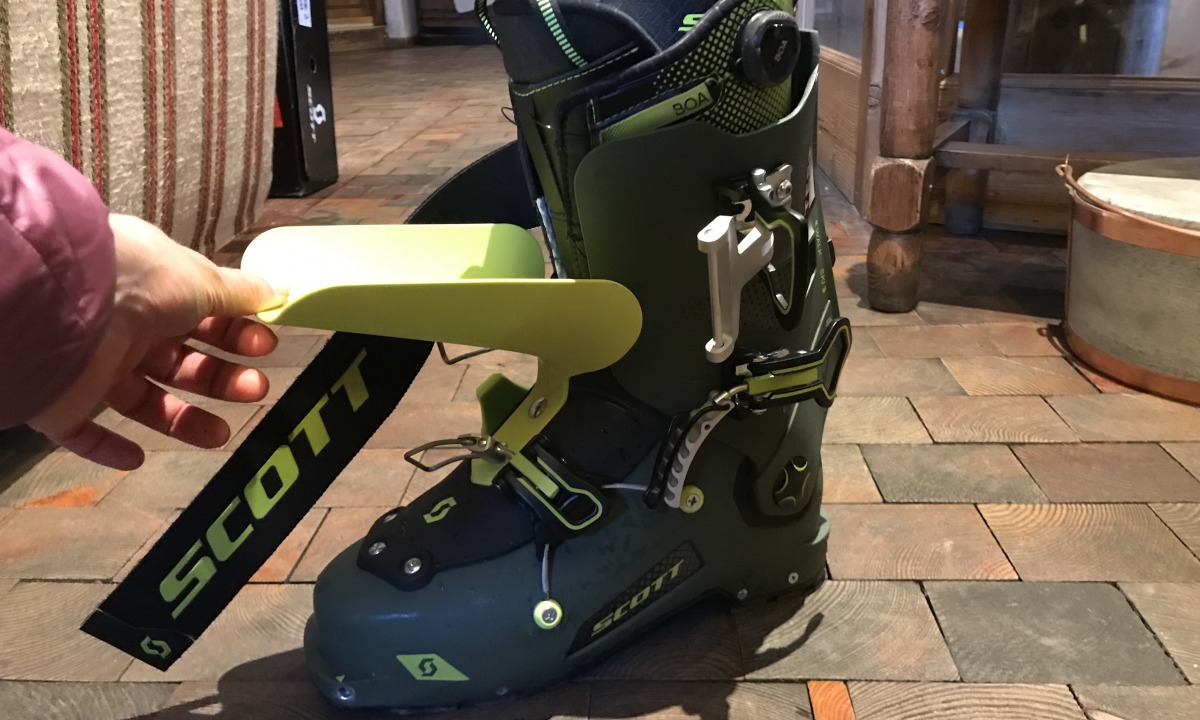
The cabrio hybrid construction combines typical overlap with three piece cabrio, including a auto-locking tongue for stiff and progressive performance.
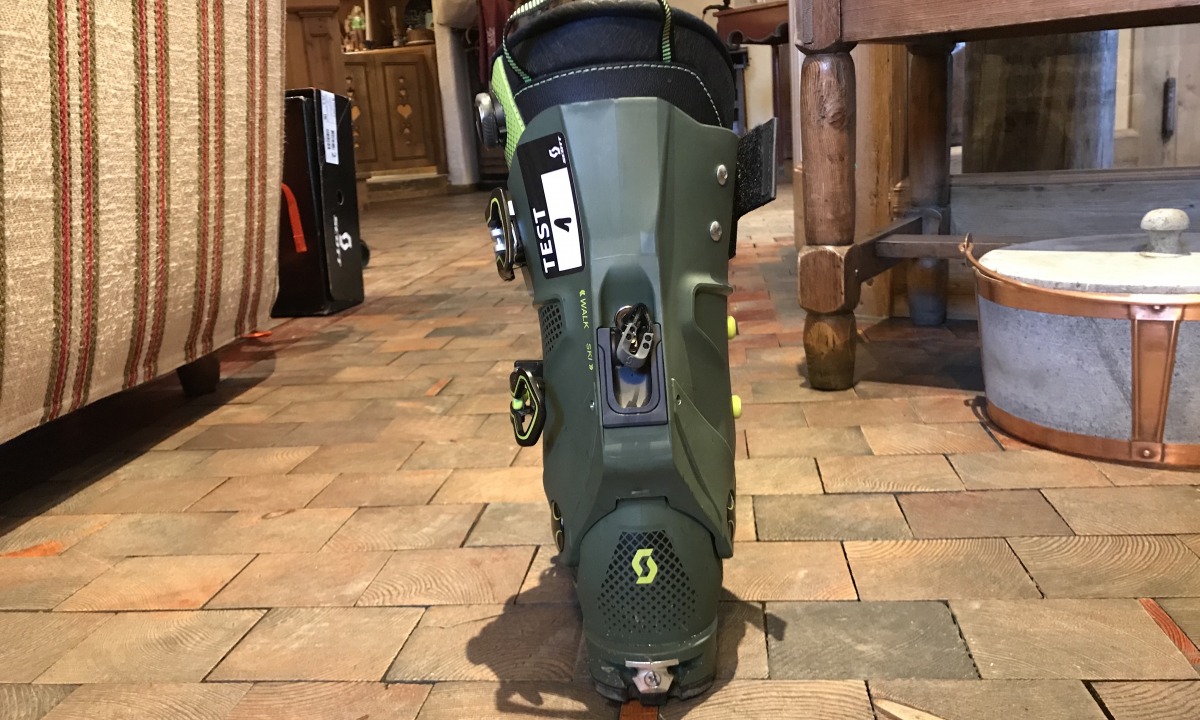
The boot also features an integrated walk-ski mechanism, and the dual locking tongue releases to allow a full 60 degree range of motion.
Contrary to the Superguide, a cavernous hard charging boot SCOTT built for high volume feet, the Freeguide tightens things up with a 101.5 last. The liner is thermomoldable and quite substantial. It’s similar in density to the Intuition liner in a Maestraele, with the added feature of a boa closure to ensure snug and performance oriented fit.
Preliminary reports from folks who’ve skied the boot were mostly favorable, though one tester said he preferred a bit more forward lean. Word is that removable spoilers will be sold with the retail version, though they weren’t available in pre-production.
Harkening back to the Cosmos which Lou called in 2013 perhaps “one of the most brilliant AT boots ever produced”, SCOTT has been able to coast on that stream of popularity with only small tweaks and little innovation over the years. The Freeguide puts SCOTT back in the driver seat, pushing performance for the ski tourer looking for a boot that combines raw stiffness with progressive flex. The result: another great touring boot option that can also double for lift served skiing. As SCOTT says, “Designed with downhill performance at its core, this boot allows you to get the most out of each turn you earn…even if you don’t earn them.” We’ll wait on the final verdict until WildSnow gets a test pair to fully put through its paces.
Specs
Weight: 1430 g (26.5)
Shell and Cuff: Carbon re-enforced grilamid, Cabrio/overlap hybrid
Flex: 130
Last: 101.5
Range of motion: 60°
Forward lean: 15°, (spoiler available in retail model)
Buckles: 3 Autolock lightweight
Sole: Skywalk rubber
Binding Compatibility: Tech, MNC
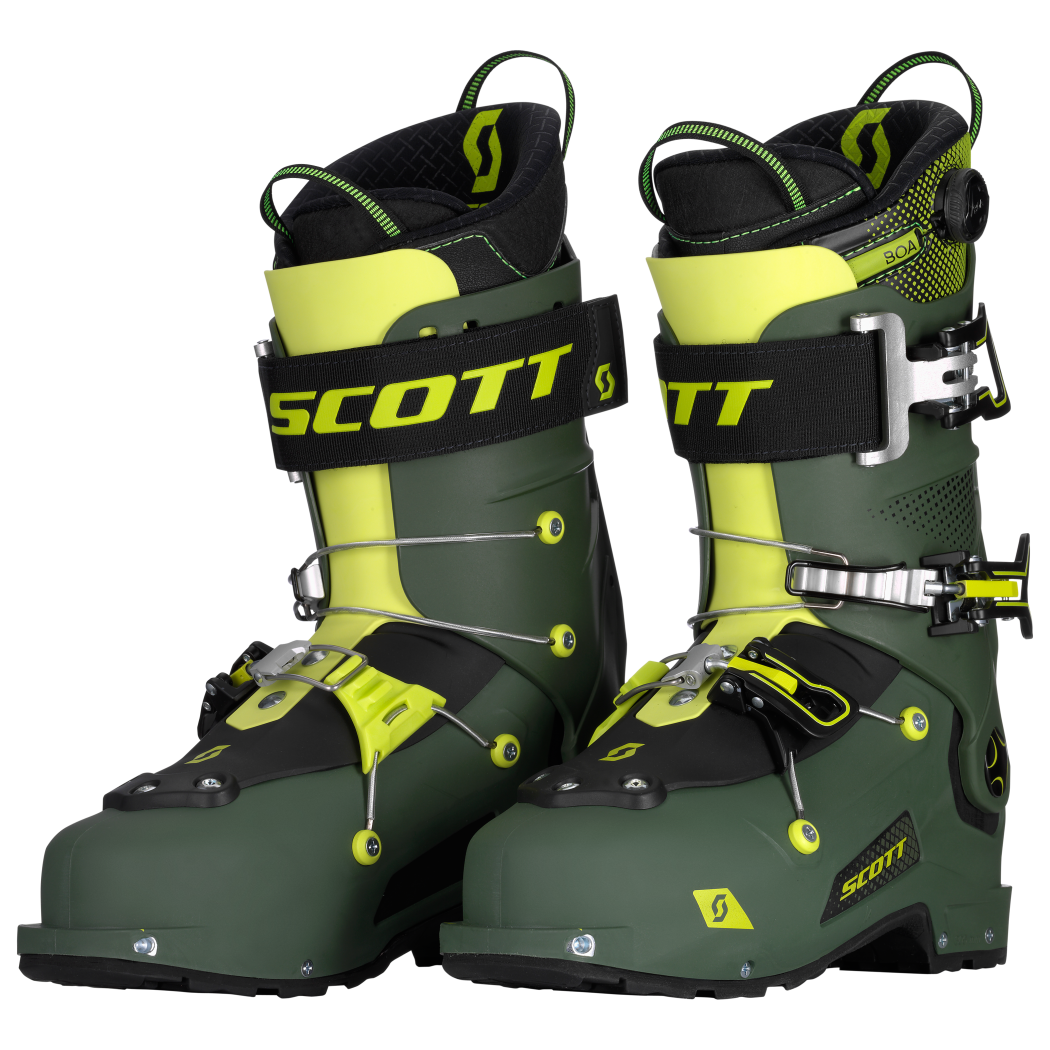
The Freeguide is an all around good looking boot with great potential for big performance. We’re excited to see how it performs in the field.
Manasseh Franklin is a writer, editor and big fan of walking uphill. She has an MFA in creative nonfiction and environment and natural resources from the University of Wyoming and especially enjoys writing about glaciers. Find her other work in Alpinist, Adventure Journal, Rock and Ice, Aspen Sojourner, AFAR, Trail Runner and Western Confluence.

